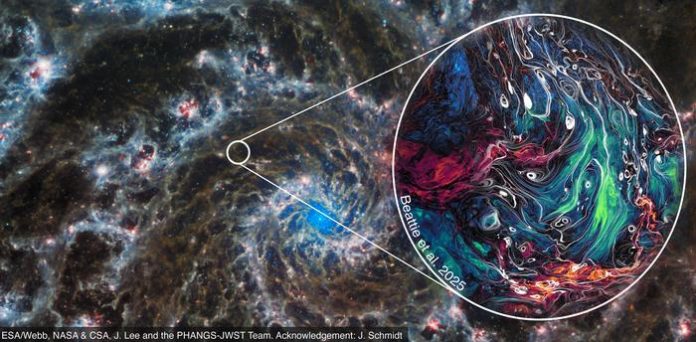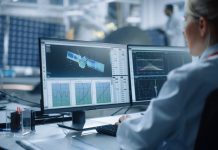
Galactic turbulence, a cosmic enigma influencing everything from star formation to particle movement, has been simulated with unprecedented precision. The surprising results challenge long-held theories about energy flow in the vast interstellar medium
From the ocean’s rolling swells to the bumpy ride of a jetliner, galactic turbulence is a ubiquitous force. It breaks large waves into smaller ones, cascading energy across scales. It is equally present throughout our Galaxy and the broader Universe, shaping the behaviour of plasma, stars, and magnetic fields.
However, despite its widespread presence, turbulence remains one of the greatest unsolved mysteries in physics. Now, an international team of scientists has made a significant leap forward in understanding this phenomenon, developing the world’s largest-ever simulations of magnetised turbulence. Their groundbreaking results reveal that turbulent energy moves across galactic scales in a way that contradicts long-standing theories.
Simulating the unseen: A new perspective on galactic turbulence
The study, led by James Beattie, a postdoctoral researcher at Princeton University and the University of Toronto, alongside Amitava Bhattacharjee of Princeton, and colleagues from the Australian National University, Heidelberg University, and the Leibniz Supercomputing Center, has provided an unprecedented look into the turbulent heart of our Galaxy. By simulating galactic-type turbulence with remarkable precision, the researchers observed significant departures from the models that have guided astrophysical theory for decades.
One of the key findings is the crucial role of magnetic fields in shaping turbulence within the interstellar medium – the vast space between stars. The team’s simulations explicitly showed that magnetic fields alter the way energy cascades through this space, suppressing small-scale motions while simultaneously enhancing certain wave-like disturbances known as Alfvén waves. This discovery has the potential to reshape our fundamental understanding of the Galaxy’s turbulent structure, the transport of high-energy particles, and even the processes that govern the birth of stars.
Practical implications for space exploration and beyond
Beyond its theoretical significance, this research has practical implications that could impact our ability to safely navigate space. As commercial space flight becomes increasingly common, understanding and accurately modelling galactic turbulence and the production of highly energetic particles is paramount.
According to Bhattacharjee, the study’s co-author and a Professor of Astrophysical Sciences at Princeton, the findings can improve our ability to predict and monitor space weather. This enhanced understanding of the plasma environment surrounding satellites and future space missions is crucial for protecting both equipment and human lives from the potentially damaging effects of energetic particles. Furthermore, the research sheds light on the fundamental questions surrounding the origin of cosmic magnetic fields, providing valuable insights for interpreting data from current and future NASA missions.
Unlocking galactic secrets through massive simulation
The scale of the simulations undertaken by the team is truly impressive. To accurately model the complex dynamics of turbulence in space, which is far more intricate than on Earth due to the presence of magnetic fields, the researchers relied on the equivalent of 140,000 computers running in parallel.
Beattie emphasised the magnitude of this computational undertaking: “To put these massive simulations into perspective: if we had started one on a single laptop when humans first domesticated animals, it would just be finishing now.” He credited the exceptional resources at the Leibniz Supercomputing Centre for making this groundbreaking research possible.
This work, published in the journal Nature Astronomy on May 13, 2025, represents a significant step forward in our quest to unravel the mysteries of turbulence. By pushing the boundaries of computational simulation, the researchers are paving the way for a deeper understanding of the universe, from the chaotic plasma near Earth to the vast, turbulent motions within our Galaxy and beyond. The team’s ultimate goal is to identify universal features of galactic turbulence that apply throughout the cosmos, a challenge they are committed to pursuing with the next generation of simulations.










